It’s been one of the most dramatic weeks in crypto history, with Bitcoin plunging from 121,000 USD (186,000 AUD) to 106,000 USD (163,000 AUD) after Donald Trump announced 100% tariffs on China, triggering nearly 19 billion USD (29 billion AUD) in liquidations and wiping out more than 1.6 million traders. The crash exposed how fragile leveraged trading has become, as platforms like Hyperliquid and Aster offer extreme leverage that can turn small swings into massive wipeouts. While traders struggled with heavy losses and real-world consequences, fresh shocks followed: a mysterious “Trump Insider” trader placed billion-dollar shorts ahead of the crash, Binance faced scrutiny over a liquidity incident, and Paxos accidentally minted and burned 300 trillion PYUSD (461 trillion AUD) in minutes. Yet there were bright spots too, with Bhutan moving its national ID system to Ethereum and Coinbase expanding in Asia through an investment in CoinDCX, a reminder that even in chaos, crypto’s evolution never stops.
What’s Happening On The Wayex Platform This Week
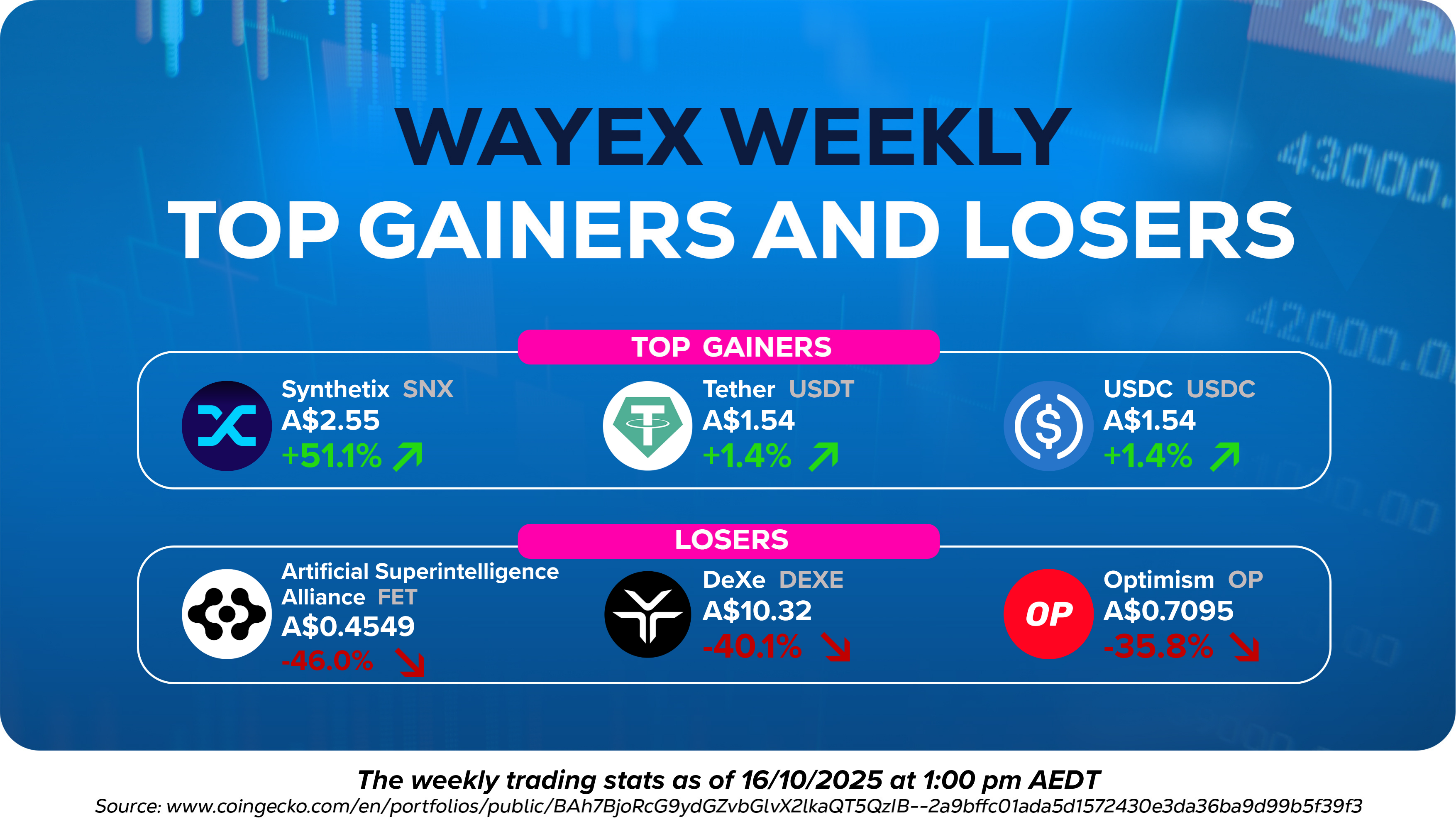
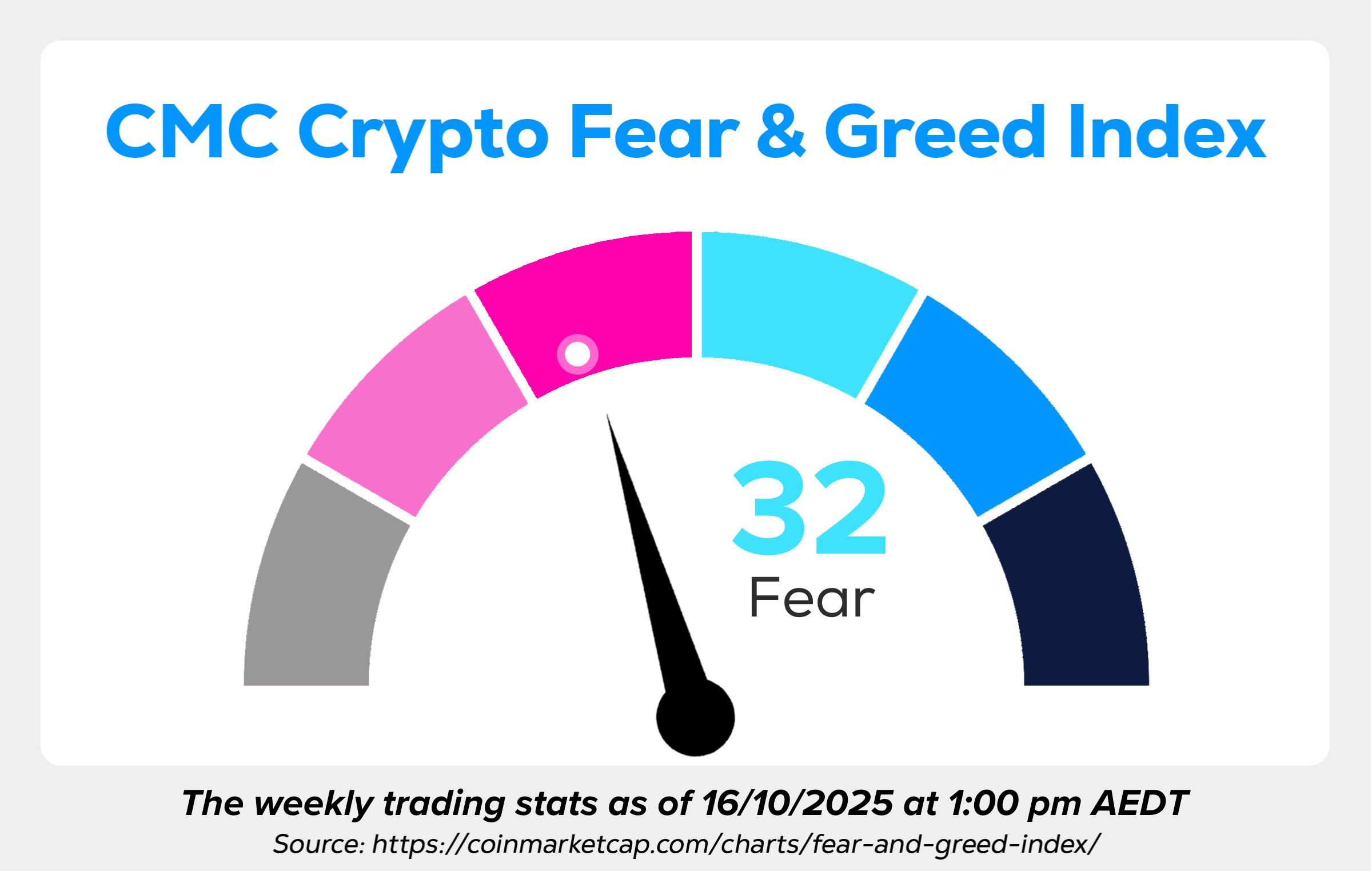
Bitcoin Dropped, Trump’s tariffs threat
Bitcoin’s dramatic plunge from 121,000 USD (186,000 AUD) to 106,000 USD (163,000) Saturday AU time marked the largest liquidation event in crypto history, wiping out nearly 19 billion USD (29 billion AUD) in leveraged positions within 24 hours. The crash was triggered by US President Donald Trump’s announcement of 100% tariffs on China, which hit after traditional markets closed, leaving crypto as the only channel for investors to react. The sudden volatility caused mass liquidations in the perpetual futures (perps) market, where traders use borrowed funds to amplify bets on Bitcoin’s price. As prices fell sharply, leveraged positions were force-closed in a rapid cascade of liquidations, with over 1.6 million traders wiped out. Analysts say the event exposed how leverage magnifies both gains and losses, creating systemic vulnerabilities in the derivatives market. Despite a quick recovery above 115,000 USD (177,000 AUD) experts warn that the growing popularity of high-leverage platforms like Hyperliquid suggests these flash crashes may become a recurring risk in an increasingly speculative crypto ecosystem.
It Was Not A Good Week..
Friday’s 19 billion USD (29 billion AUD) crypto liquidation event, the largest in history, has reignited debate about whether perpetual futures and excessive leverage are creating systemic risk in the digital asset market. Now it goes without saying that these liquidations hurt people, with some having their entire portfolios liquidated. Even as defi true believers, we must acknowledge the real-world harm that these market events cause. Some traders lost their whole portfolios and resulting in real-world losses, including some really quite distressing news of high-profile deaths.

It is important to us to note that support is always available from places like Lifeline, Beyond Blue, LGBTQI+ health and Yarn. The liquidation event was one of the biggest in history, and as experienced crypto traders, we were shocked by the extent it. The event was fuelled by market volatility, global trade instability and what could reasonably be argued as criminal actions by some in the industry.
Although we acknowledge that there were a range of factors that influenced the mass liquidation event, it was not helped by platforms offering “leveraged trades” for their users. Analysts say the surge of platforms like Hyperliquid and Aster, which offer extreme leverage of up to 1,001x without KYC requirements, has made risky trading strategies dangerously accessible.
For a detailed analysis on auto-leveraging trading, Blockworks Breakdown newsletter recommends @0xDoug.
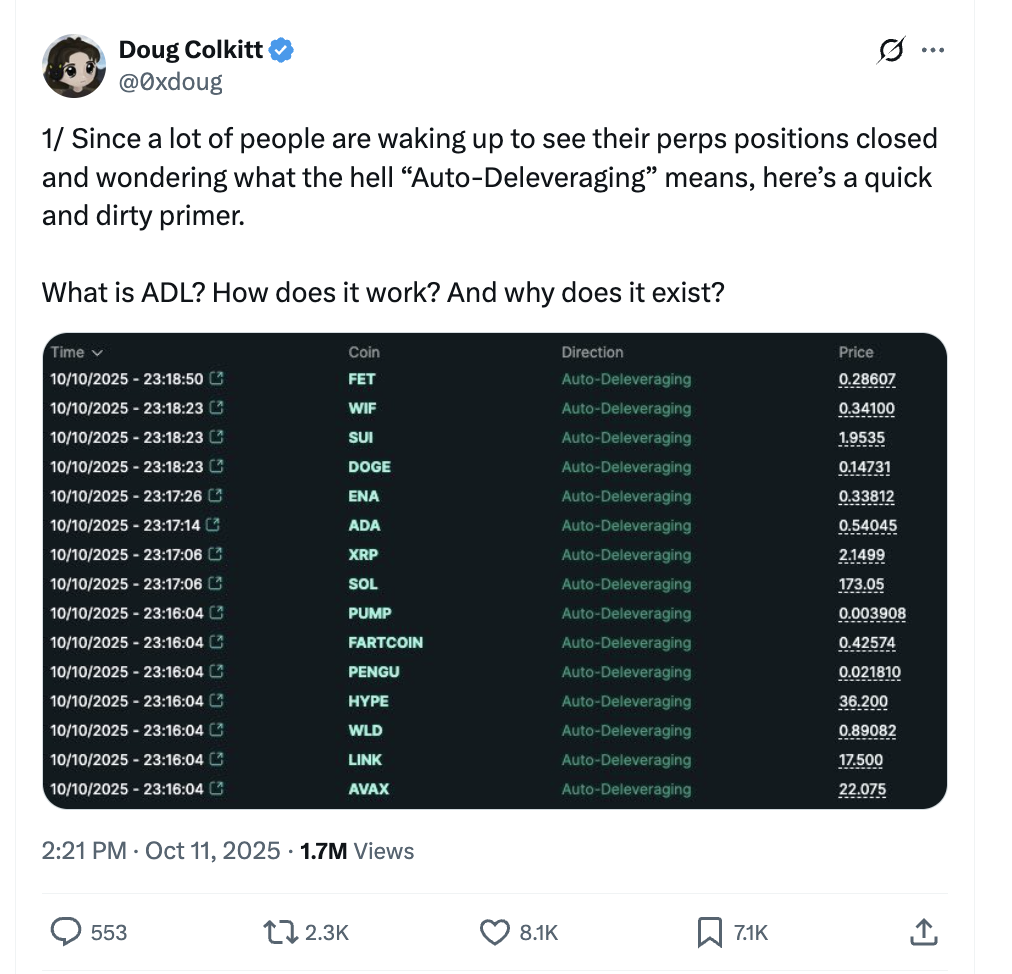
As exchanges compete by lowering collateral requirements and raising leverage limits, cascading liquidations where one margin call triggers another are becoming more frequent. Experts from Bitwise, GSR, and CMT Digital warn that this leverage race is eroding market stability, especially in smaller altcoins where derivatives dominate price action. While some, like CoinShares’ James Butterfill, believe volatility will lessen as the market matures, others caution that the ease of high-leverage trading could make flash crashes a recurring feature of the crypto landscape.
The Short Of All Shorts
A crypto whale known as the “Trump Insider” has returned to the spotlight after reportedly making over 160 million USD (246 million AUD) shorting Bitcoin and Ethereum just before Donald Trump’s China tariff announcement caused the market to crash. The trader, active on the Hyperliquid exchange, had opened more than 1.1 billion USD (1.7 billion AUD) in shorts ahead of the sell-off. Either this particular person is the luckiest person or smartest person ever, or maybe some shenanigans were afoot, who knows.
Although it should be stated categorically that Crypto Twitter has nicknamed him the ‘Trump Insider’, there has been no credible confirmation of the identity of this crypto wizard. It is an important time to remember that anyone on the internet can claim anything.
Getting back to the point of this crypto wizard’s oracle-like wisdom, in an extraordinary turn of events, the same wallet has opened another massive 392 million USD (255 million AUD) Bitcoin short, funded by 80 million USD (123 million AUD) in USDC, signalling renewed bearish sentiment. Two other large Hyperliquid traders have joined in, placing a combined 182 million USD (280 million AUD) in short positions across BTC, ETH, DOGE, SOL, and XRP. The moves have fueled speculation of another potential market drop and raised questions about how unregulated, high-leverage trading can intensify crypto’s volatility.
Binance is persona non grata
Over the weekend, the crypto market was rocked by what appears to be a mysterious and possibly coordinated liquidity event centred on Binance. The exchange had been using its own spot prices to value certain collateral assets for tokens such as wBETH, BNSOL, and Ethena’s USDE rather than broader market indices.
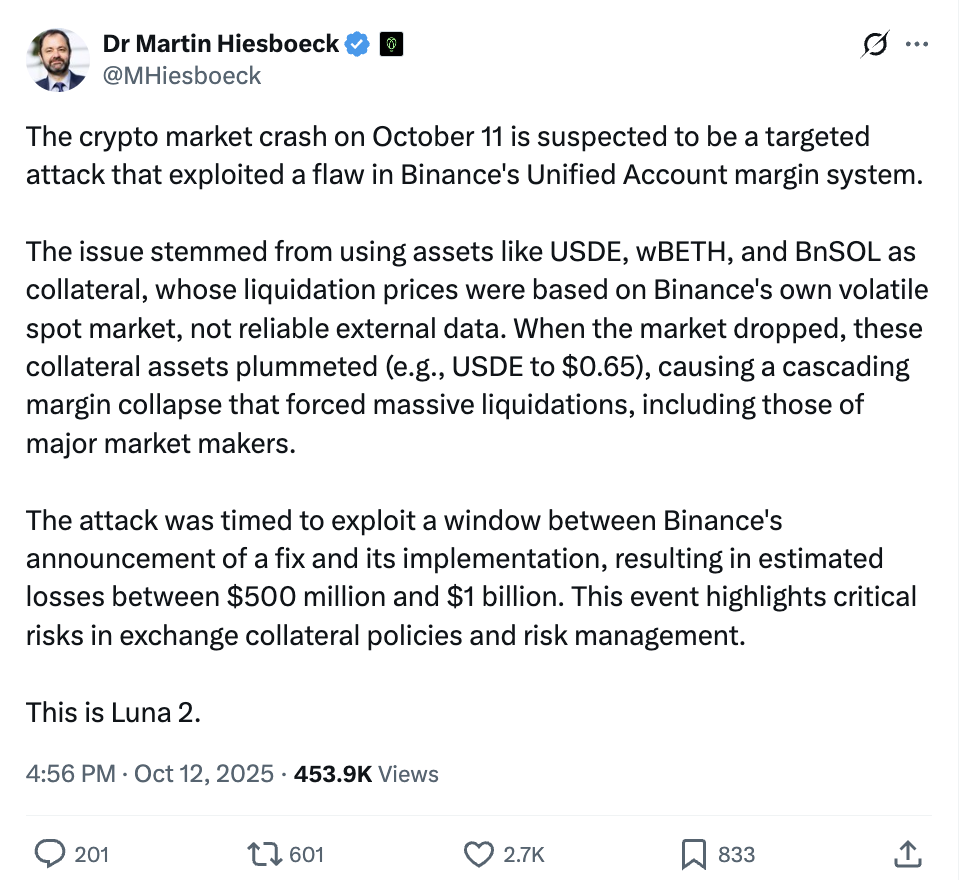
The experts agree that when the liquidity in those spot markets suddenly evaporated, their prices collapsed, triggering mass liquidations for traders using them as collateral, despite their stable values elsewhere. Strangely, Binance had just announced plans to change its pricing oracles to prevent this exact issue, raising suspicions of a targeted exploit.
Data shows that Binance’s order books were nearly drained within minutes, aligning with sharp market moves and massive profits made by two traders who shorted Bitcoin and Ethereum right before the event. While Binance later compensated affected users and institutions with a 400 million USD (615 million AUD) compensation, analysts suggest this could be part of a broader pattern of oracle manipulation attacks, exposing vulnerabilities in how centralised exchanges manage liquidity and collateral pricing. CoinTribune, noted that the compensation did not match the losses provided by users, and the winner of the crash was BNB, a token owned by Binance itself.
Further, ire has been gained by Binance from across the spectrum after its support team posted and deleted messages threatening to sue users for posting about Binance’s listing fees and rules guaranteeing a certain amount of supply to be listed on their exchange, but this was categorically denied by Binance in a since-deleted tweet.
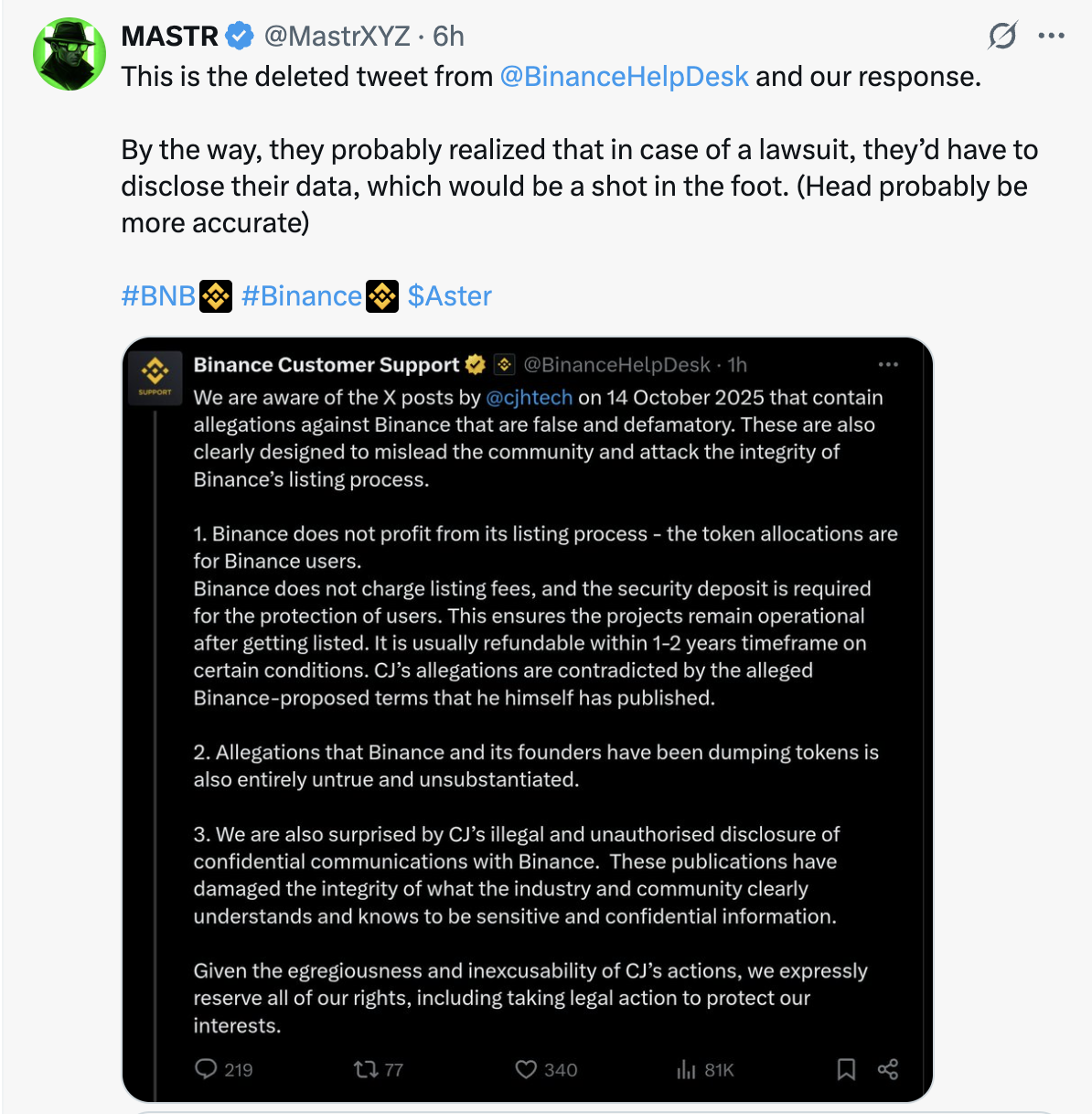

Victor Bunin, Head of OG Protocol at Coinbase, had this to add to the Twitter storm after the Binance posts.

Bhutan Tokenises National ID On Ethereum
Bhutan is making a big move into crypto. The country’s National Digital Identity (NDI) system is being moved to Ethereum, making Bhutan the first nation to put a live digital ID on a public blockchain. The full move is planned for early 2026. Once complete, people in Bhutan will be able to prove things like citizenship, age, or residency using secure digital IDs instead of government databases.
The project was first built with help from Cardano’s IOG and is part of Bhutan’s growing use of blockchain, which already includes Bitcoin mining, crypto in its national reserves, and Binance Pay for tourism payments. Ethereum’s Vitalik Buterin said the move gives citizens more control over their data, but some experts warn it could raise privacy risks if personal information on public blockchains isn’t protected properly.
Just When We Thought It Was Over
Crypto traders were shocked on Wednesday when Paxos, the company that issues PayPal’s PYUSD stablecoin, accidentally created and then deleted 300 trillion PYUSD tokens, worth about 300 trillion USD (461 trillion AUD). The mistake was seen on the Ethereum blockchain, where Paxos made the tokens and then sent them to a “burn” address 22 minutes later, permanently removing them. The lending platform Aave briefly paused PYUSD trading after noticing the huge transaction.

Paxos later said it was just a technical error during an internal transfer, not a hack, and that no customer money was lost. PYUSD’s price only dropped by about 0.5% before returning to normal. The incident showed how even a small mistake in blockchain code can cause big reactions across the crypto world

Coinbase Invests In CDX
Coinbase has announced a new investment in Indian crypto exchange CoinDCX, valuing the company at 2.45 billion USD (3.77 billion AUD) post-money and signalling its growing commitment to the Asian crypto market. The move strengthens Coinbase’s regional presence following its recent licensing in Singapore and Dubai, and aligns with its strategy of promoting “responsible innovation” in emerging economies. Founded in 2018, CoinDCX now serves over 14 million users with trading, staking, and educational tools, solidifying its status as India’s first crypto unicorn. Alongside this deal, Coinbase also backed prediction market Kalshi and stablecoin infrastructure firm Coinflow, reflecting a broader strategic focus on regulated exchanges, prediction markets, and stablecoin ecosystems as pillars of the next on-chain economy.
Things that made us laugh this week



Founders Corner
This week was one of the most turbulent in crypto history, with Bitcoin crashing from US$121,000 to US$106,000 (A$189,000 → A$166,000) after Donald Trump’s sudden announcement of 100% tariffs on China, wiping out over US$19 billion in leveraged positions and affecting 1.6 million traders. The scale of losses exposed how fragile high-leverage trading has become, and while volatility is nothing new in crypto, this event showed the human cost that often gets overlooked: people lost their savings, and tragically, some even lost their lives.
Our thoughts go out to everyone impacted. It’s a sobering reminder that speculation can’t come at the expense of safety or mental health. This is not what I believe crypto should be about. We often see so much innovation and positive things coming out of this industry, but events like this remind us to always stay vigilant and aware of what is going on. Never trade with what you can't afford to lose, and if you are trading leverage, note that you can always set a stop loss.
Beyond the chaos, markets are still processing what this means long-term. Allegations of insider trading, Binance’s liquidity stumbles, and Paxos’ accidental minting of 300 trillion PYUSD add to how fragile infrastructure remains even as institutions pour billions into ETFs and stablecoin ecosystems. As the dust settles, one truth stands out: crypto is evolving fast, but resilience will depend not on leverage or hype; it’ll depend on building systems that protect people first.
Richard Voice, Wayex, Co-Founder
**All information in this article is for informational purposes only. You should not construe any such information or other material as legal, tax, investment, financial, or other advice. Nothing contained herein shall constitute a solicitation, recommendation, endorsement, or offer by Wayex to invest, buy, or sell any coins, tokens, or other crypto assets. Any descriptions of Wayex products or features are merely for illustrative purposes. Past performance is not a guarantee or predictor of future performance. The value of crypto assets can increase or decrease, and you could lose all or a substantial amount of your purchase price. It is essential for you to do your research and due diligence to make the best possible judgement, as any purchases shall be your sole responsibility.
.png)









